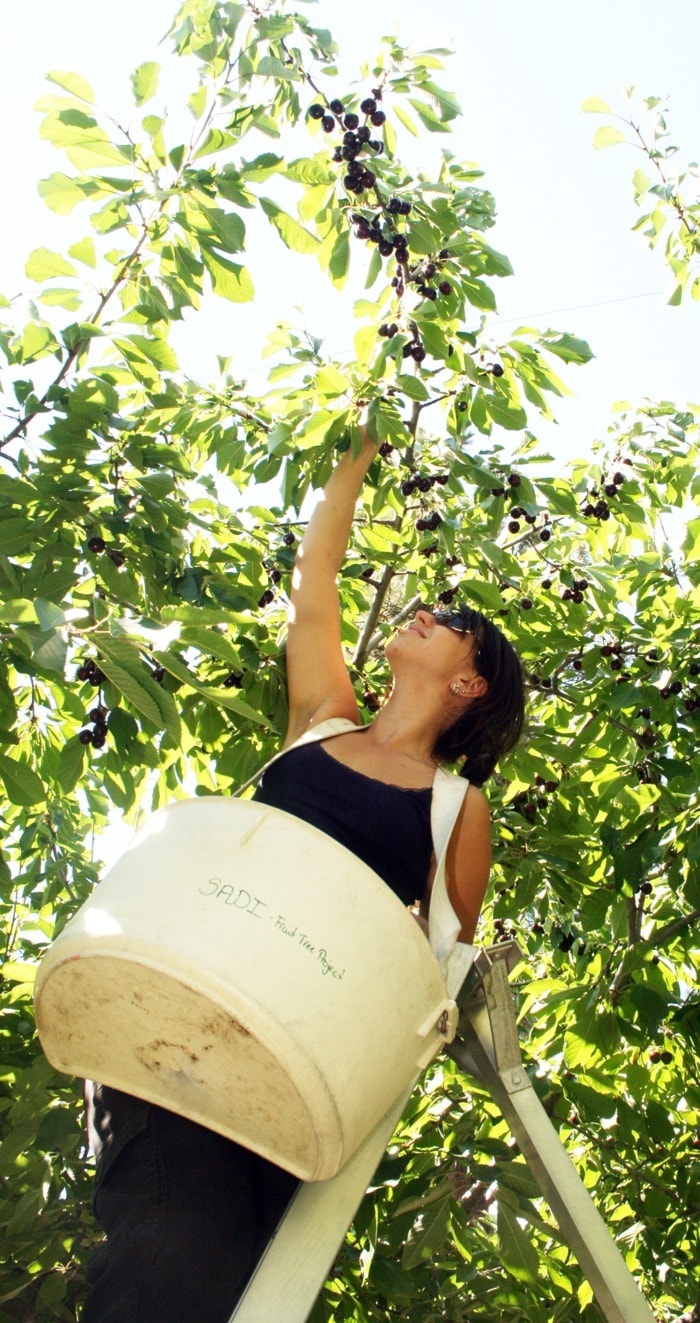It is still statistically uncertain how this year’s cherry crop will turn out to be. As the president of the B.C. Fruit Growers Association Joe Sardinha says, much of it depends on “what we haven’t had yet — summer.”
But early signs — and they are exactly just that — point to a stronger crop than last year.
“I think there will be more cherries this year,” said Sardinha.
Cherry growers in some parts of the South Okanagan have already begun to harvest some early season varieties, he said.
Much of the rest of the valley, including this part of the South Okanagan, will follow in due time, he said. In the end, the weather will play a big role in whether this harvest will be a success.
Sardinha said he expects that the unusually mild spring and summer can cause some delays in harvesting. But this delay might end being no longer than a week if weather conditions stay dry and hot.
The unseasonal temperatures are also impacting competitors south of the border. It will likely not lead to a flood of cherries from growers in primarily Washington State.
“And that bodes well,” said Sardinha. “If there is too much fruit (from the Pacific Northwest), it can really destabilizes the market,” he said.
In fact, cherry growers in the United States have been scrambling through the July 4 holiday weekend to get product on the market to meet consumer demand for what is an important date for fruit growers on the southern side of the border.
Cherry growers in the South Okanagan are also keeping an eye on other international developments, particularly the status of Canadian dollars.
Cherry growers — who manage about a quarter of fruit growing acreages in the province — have done relatively better than apple growers thanks to more diversified products and export markets.
“It is no secret that the cherry of the (fruit growing) industry has fallen on better times than the apple side,” said Sardinha.
This said, cherry growers also confront the prospect of a high Canadian dollar. It has made their products more expensive abroad, thereby cutting in profit margins.
The high loonie is not the only factor impacting key parts of the provincial agricultural sector.
Others include high fuel prices compounded by the provincial carbon tax, a fact which growers in other jurisdictions do not face. The carbon tax will take another $10-million bite out of farm revenues when it goes up July 1, according to published reports.
Farmers in British Columbia have also faced, depending on location, a number of climatic disturbances over recent years. Overall, it has added up to a less than pretty financial picture.
Farming is a $2.5-billion industry in B.C., yet according to Statistics Canada, in 2010 the industry lost $87 million.
It was the only province in Canada to have negative income last year, the worst performance in the country, according to reports.
